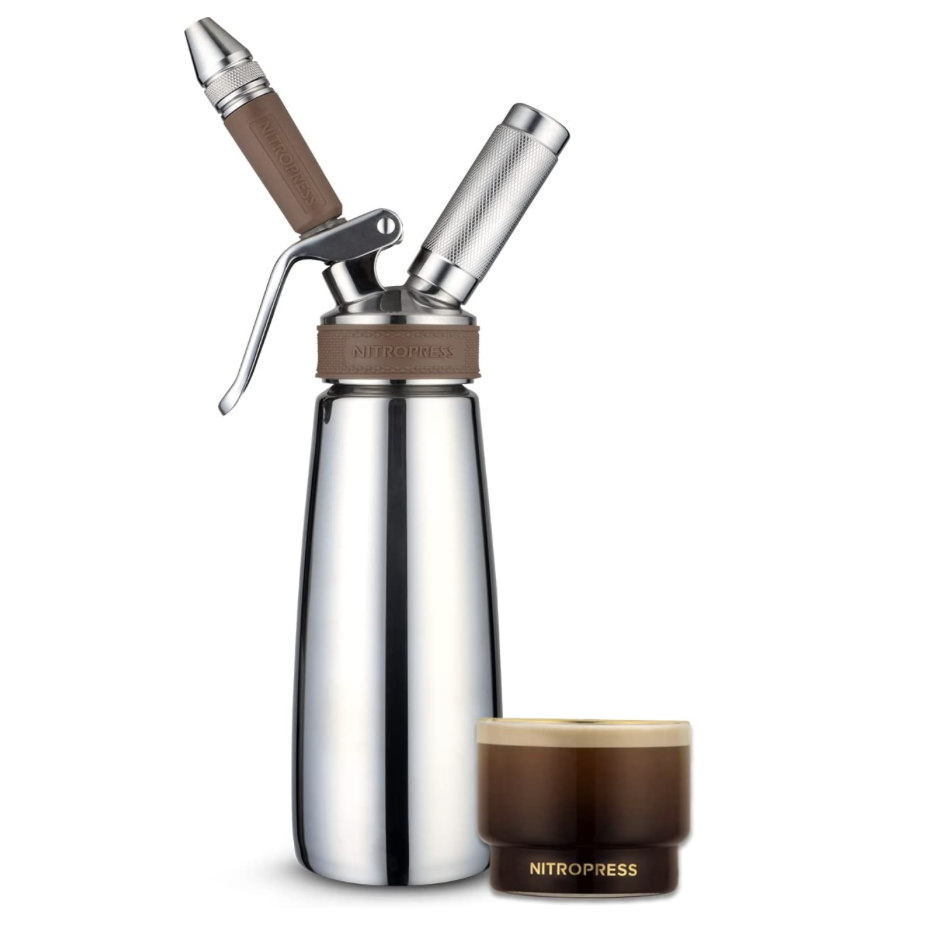Nitrogen-infused coffee, commonly known as “nitro coffee,” is relatively new to the coffee scene. It borrows a technique from the beer brewing industry, where nitrogen has been used for years to create beers with creamy textures and foamy heads.
Origin: Nitro coffee was reportedly first introduced in 2011-2012 by a small, innovative coffee company in Austin, Texas named Cuvee Coffee. The idea was then popularized by Stumptown Coffee in Portland, Oregon, and it wasn’t long before it spread to specialty coffee shops across the U.S. and then internationally. The technique of infusing coffee with nitrogen was inspired by the craft beer industry, particularly by Guinness, which is well-known for its creamy, nitrogen-infused beers.
Popularity: Nitro coffee is popular with coffee enthusiasts who are looking for a new and unique coffee experience. It’s also popular with people who prefer cold and iced coffee, especially during the warmer months. Nitro coffee has a sweeter, creamier taste than regular coffee, which can make it more appealing to people who find regular coffee too bitter. Additionally, the lower acidity of cold brew coffee (the base for nitro coffee) can be easier on the stomach.
Making Nitro Coffee at Home: While it’s definitely more complex than brewing a standard pot of coffee, it is possible to make nitro coffee at home. Here’s a basic overview of the process:
- Brew Cold Brew Coffee: This is the base for your nitro coffee. Coarsely grind your coffee beans and then steep them in cold water for 12 to 24 hours. Strain the mixture to remove the grounds, and you have cold brew coffee.
- Nitrogen Infusion: For this step, you’ll need a whipped cream dispenser or a “keg” system designed for home use. Both of these should come with nitrogen cartridges. Fill the whipped cream dispenser or keg with your cold brew coffee and then follow the manufacturer’s instructions to infuse the coffee with nitrogen.
- Serve: Nitro coffee is typically served cold without ice (ice can dilute the frothy texture). Pour your coffee into a glass and watch as the nitrogen bubbles create a frothy, beer-like head. Enjoy as is, or add a splash of milk or sweetener if you prefer.
Please remember, using nitrogen canisters requires attention and respect for safety guidelines. Always follow the instructions and safety precautions provided by the manufacturer. If you’re not comfortable handling nitrogen gas at home, you can always enjoy nitro coffee from a local coffee shop.
Please note that if you purchase from clicking on the link, some will result in my getting a tiny bit of that sale to help keep this site going.



